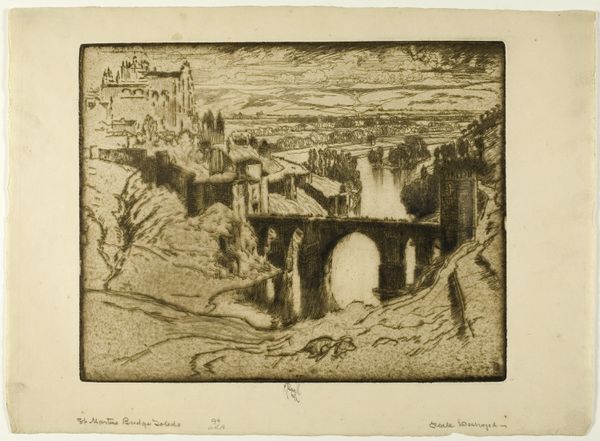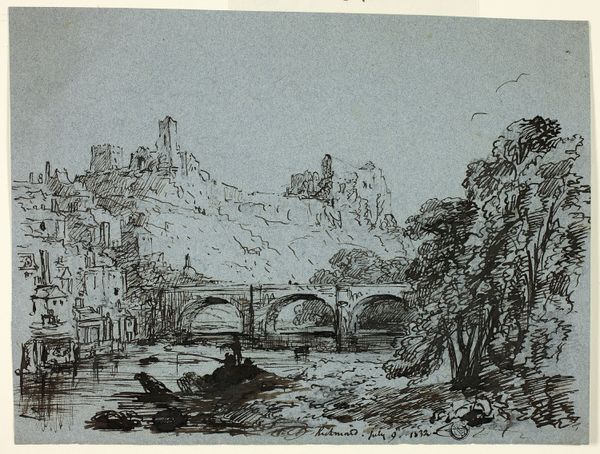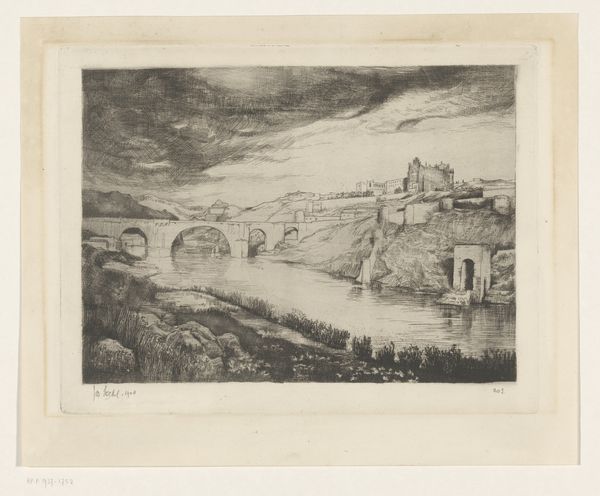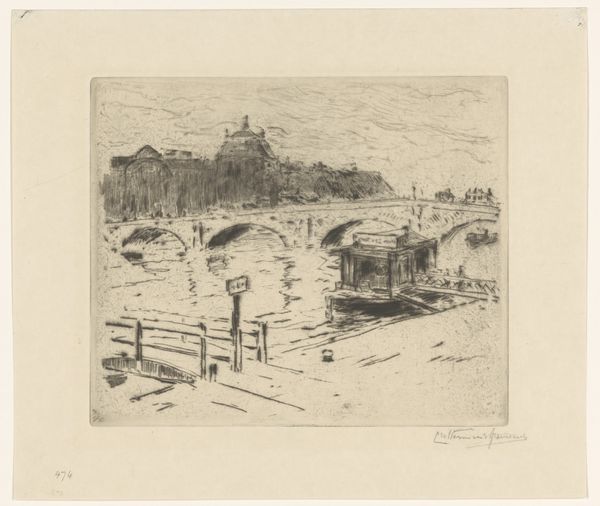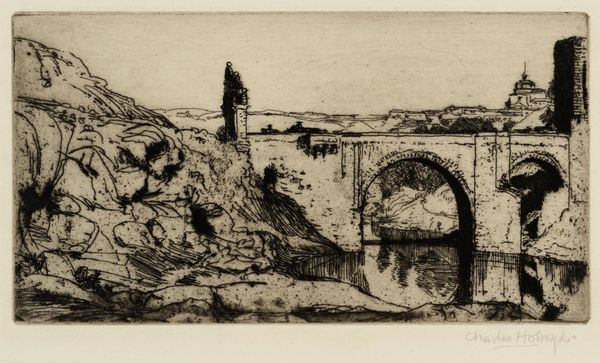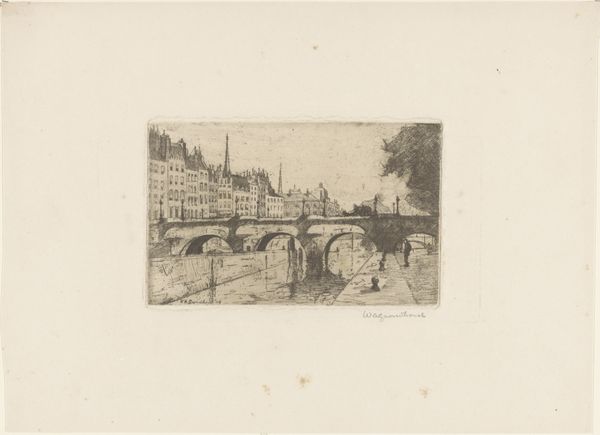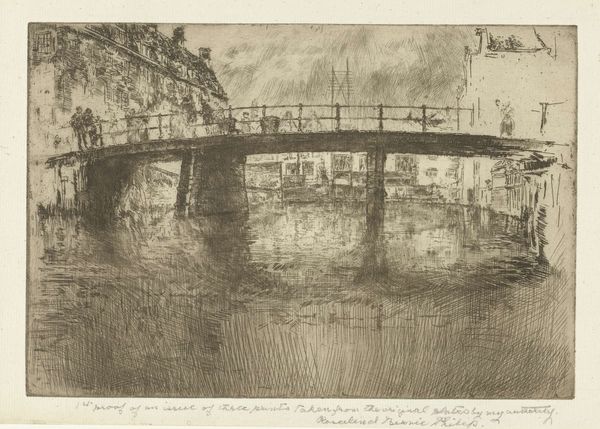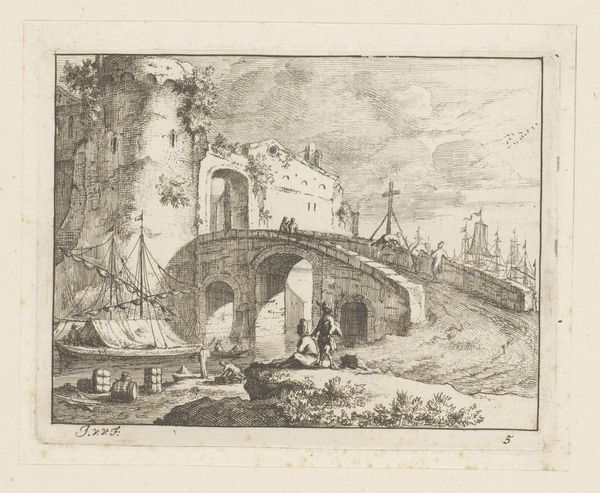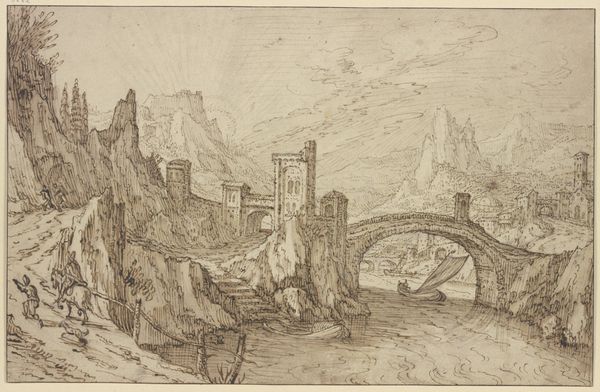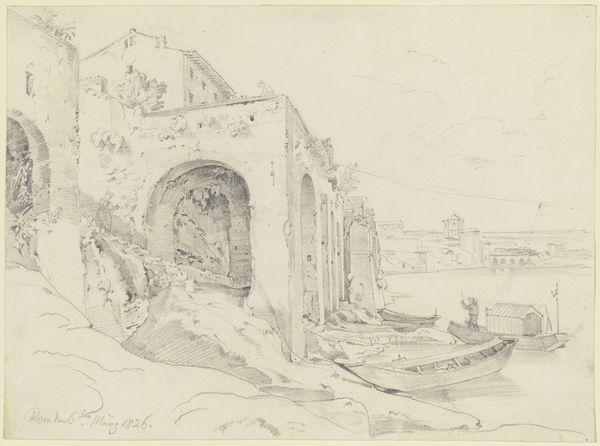
drawing, print, etching, paper
#
drawing
#
ink painting
# print
#
etching
#
landscape
#
paper
#
cityscape
Dimensions: 200 × 250 mm (image); 240 × 300 mm (sheet)
Copyright: Public Domain
Curator: What strikes you most when you look at Joseph Pennell’s “St. Martins Bridge, Toledo,” created in 1904, an etching on paper? Editor: It has a kind of gloomy beauty, doesn't it? A very detailed city scene is rendered in strokes that still feel quite raw, almost unfinished. Curator: The roughness contributes to its industrial aesthetic. Etching allowed for the mass production of images, democratizing access to art. Pennell was a master of printmaking, embracing its potential to depict modern life and architecture. Think about the accessibility this offered, contrasting with unique, singular paintings. Editor: That's interesting to consider. The choice of medium is definitely part of its message. There’s an almost gritty honesty to the scene that aligns with the urban realities faced by working people at the time. How might we consider who Pennell envisioned engaging with this particular image? Curator: Well, prints like these circulated widely in books and periodicals. By making views of these important infrastructures accessible to a wider audience, it's fair to consider its implicit nod toward notions of social uplift and cultural capital. Consider also how labor-intensive etching is. The repetitive, painstaking action required for the build-up of textures mirrors the industrial work occurring throughout the city at this time. Editor: That labor is fascinating. It resonates too with the history and power symbolized by the city of Toledo itself. This isn’t just a pretty landscape; it’s a location laden with social and political meaning, hinting at power structures that influence all layers of society. Curator: Yes, and the act of depicting that through a readily-produced, material form brings up all these layers. This print is not just the final image but a complex interaction of processes, materials, and cultural meanings, captured during an important transitional moment in our history. Editor: Exactly, and for me, examining art as activism allows a fresh lens on a traditional piece of artwork. It offers up a richer historical context. Curator: Agreed. Seeing the art as not just a static image, but a moment and the start of something gives it real presence. Editor: And those social and material factors allow for fresh understanding about artistic motivation, beyond any simplistic ideas about inspiration and beauty.
Comments
No comments
Be the first to comment and join the conversation on the ultimate creative platform.
